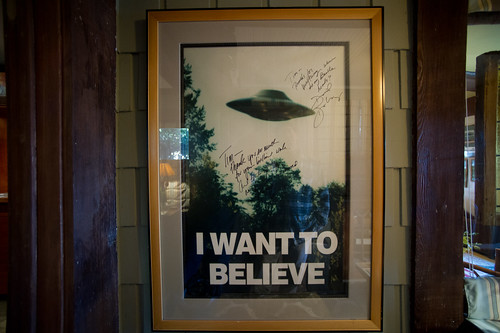Looking back on the calendar to see what notes I have from the week ending last week and poking through the notesbook, the thing that stands out is an engaging discussion with Kurt that, as it turns out, was about communicating ideas. You know *how do you enroll someone into your conversation and evolve intellect into action and materializations? Originally planned as a meeting to share with him the material of the project itself, we ended up spending the two+ hours talking about various strategies to make an idea compelling to someone who is perhaps not entirely inclined to ingest a rather unusual project, with (*quite potentially) rich implications. In an organization with the inertia of a planetary body, shifting trajectory and adjusting priorities is an epic task. (*With, here, only modest expectations here as to doing this, and certainly not alone.)
The conversation obviously perpetuated thinking about the theater, drama and story telling techniques that can benefit from a mix of design and fiction. How do you tell the story of *Trust through exemplars first rather than the usual front-first build up. As a story, could it be more intriguing to start *at the police line-up, for instance, tell the story as a knot of associations, linkages, encounters, coincidences — in other words, show the Latourian *knot and then walk folks through its unknotting — it’s *denouement? More of a story than a linear, beginning-to-end explanation. Do you start with the outcome, in the form of peculiar, confusing, provocative *evidence/*objects/*exemplars and tell the story backwards? Doing so could certainly begin to shift the conversation, to be a provocation that is not the ordinary tale that one sees in the usual suspect — mundane, boring, creaky, poorly crafted, baroquely illegible PowerPoints?
And then the *prototypes shift more into the role of *props — behaving as a different sort of story telling device. Somewhere along this rough continuum are *canonical prototypes (doing as they do, to test a proposition, idea, technique or technology), *diegetic prototypes (David A. Kirby’s formulation for ideas run through a story, simultaneously achieving their function to contribute to conversations about science, for example, that exist outside of/alongside of the film’s story, as well as serving a role as a bit of narrative glue in the film itself), and *props as used in films that serve no specific function except insofar as they help move the story of the film along (as in the Macguffin which need not be anything particular or have a legible meaning or function outside of anything except the film — the suitcase that all the characters want, for some reason we need not worry about — so long as our characters create drama that is the final source of enjoyment of the film.)
An exciting consideration that requires as much consideration, crafting, production as telling a good story. But, also — as difficult, if not more so, I am certain. What we’re ultimately trying to do is turn good intellect into something more than just that. The communication should be more than a rejuvinating *brown bag lunch chat. It should call people and things to action.




